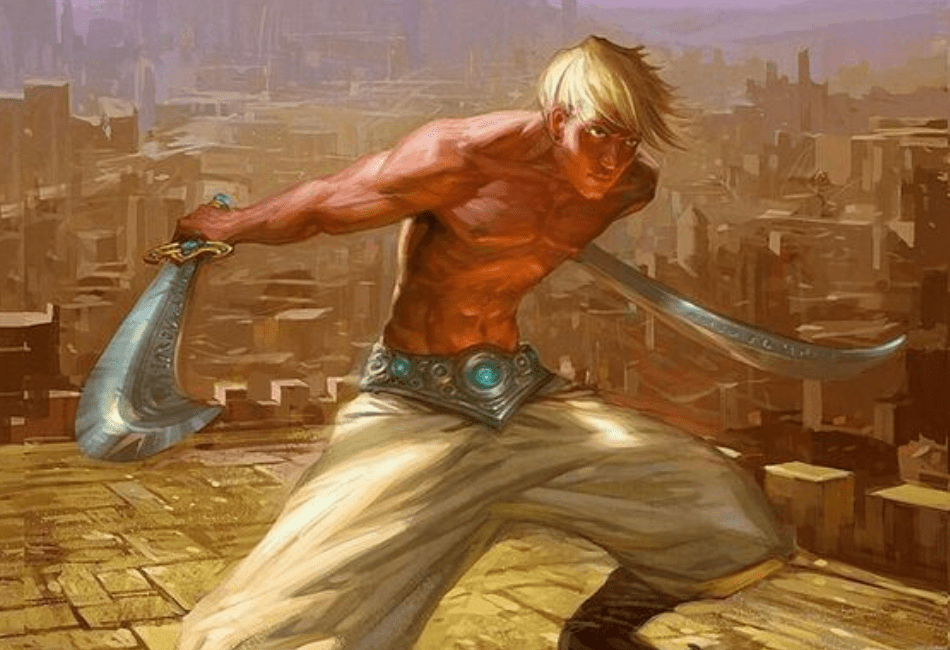Straight swords? Who needs them? Sounds boring to me. Pick yourself a blade that can go ’round corners!
Ok, they might not be able to literally attack around bends, but if you’re in the market for an agile and elegant weapon, the scimitar should be the first weapon on your list.
I’ve played quite a few characters that use scimitars and know a lot of players that have done the same. It is almost always one of the most fantastic weapons at the table, both in mechanics and flair. If you’re gifted at describing your actions (and maybe even have a custom miniature), an affinity for scimitars is guaranteed to become one of the most memorable parts of your character. Sure, people will make Skyrim memes about Hammerfell at you until the end of time, but it’s a small price to pay for curved swords.
Curved. Swords.
All jokes aside, the scimitar is an excellent weapon in D&D5e. Compact, small and practical, few would contest the successful, stylish swings of skilful scimitar swordplay.
Welcome to a scimitar 5e guide!
Bottom Line, Up Front
The scimitar is a martial melee weapon that deals 1d6 slashing damage. Its finesse and light properties make it an excellent choice for dexterity-based characters, particularly those wishing to dual-wield. It’s light at 3lb and the high end of prices for single-handed weapons at 25gp.
Description

The scimitar is a type of backsword: a sword with a single-bladed edge and a hilt with a single-handed grip. The no-bladed side is thicker to give the sword strength and stability, and the blade is curved. Due to this curvature, the scimitar excels as a slicing weapon but makes for a poor thrusting one.
The end of the sword was often flattened and more expansive to give the blade’s swing more weight and aid with its slices. Despite this, it remains a lighter weapon than most. Whilst other blades rely on raw damaging power, the scimitar makes up for its lack of heft with a design more geared toward exploiting weak spots in armor and vital areas on the body.
Stat Block
For ease of reference, here are the general statistics you can expect from an average scimitar:
- Category: Weapon
- Weapon Type: Melee, Martial
- Rarity: Standard
- Damage: 1d6
- Damage Type: Slashing
- Properties: Finesse, Light
- Weight: 3lb.
- Cost: 25gp
Special Properties
Scimitars come with a couple of unique properties that are worth keeping in mind whilst using them:
Finesse

Quite possibly the most important property for a dexterity-based fighter, finesse allows the wielder to make attack and damage rolls with their dexterity modifier instead of their strength modifier. They’re not hemmed into this switch, as they can use their strength if they want to, but must choose the same can modifier for both rolls. Rogues love finesse weapons, as do most rangers, but any character with a large amount of dexterity can make ample use of them.
Light
A weapon with the light property allows for dual wielding. If you’ve got a melee weapon in each hand, and both of those weapons have the light property, you can make two attacks on your turn. You do this by using your action for your primary hand attack and a bonus action for your offhand attack.
Picking up the feat Dual Wielder is a way to bypass this requirement, allowing you to fight with two weapons that don’t have the light property. If your strength score exceeds your dexterity, this feat looks enticing: it will enable you to dual-wield battleaxes!
For those of us that prefer being lithe over brawny, rapiers are a better choice and, whilst dual wielding them does sound appealing, it requires the steep investment of a whole feat. Without it, one of your best options for finesse weapon damage is, oddly enough, two scimitars!
Double-Bladed Scimitars

A lesser-known variety of the standard scimitar is its double-ended version. The double-bladed scimitar is a hallmark of Valenar elves but also serves anyone getting in touch with their inner Darth Maul.
Essentially two scimitars stuck end-to-end, it makes sense that its weight is double that of a standard scimitar, at 6lb. The same can’t be said for the price, however, being four times more expensive at a whopping 100gp. Even if you have money to burn, you might never get the opportunity to buy one: they’re exceptionally scarce, so much so that you might get challenged to a duel if caught holding one. Valenar elves make a habit of challenging non-elves that wield the double-bladed scimitar, assuming them to be thieves unworthy of it.
All this makes for compelling flavor text and interesting lore, but how does the double-bladed scimitar hold up as an actual weapon? The answer is a resounding… “meh?”
Choosing the double-bladed scimitar is mostly an aesthetic choice. It lacks the finesse and light properties of a regular scimitar and requires two hands. It also does 2d4 slashing damage, which isn’t a significant improvement on the standard version. It’s not a poor weapon by any means, but it doesn’t give you many (if any) mechanical benefits over just wielding two scimitars.
To compensate, the double-bladed scimitar allows you to attack as if you were holding two weapons. Like dual-wielding, attacking with a double-bladed scimitar as part of the attack action will enable you to use a bonus action to make another melee attack immediately. However, the second attack comes with less damage, inflicting 1d4 slashing instead of 2d4, which means there’s no real difference in damage compared to someone just wielding two scimitars. In both cases, your maximum damage is 12, and your average damage is 6.
The double-bladed scimitar is the only weapon in the game that has a separate feat entirely dedicated to only it: Revenant Blade. This initially seems pretty cool, but there’s a snag: this feat doesn’t provide anything that couldn’t be achieved with two scimitars and other feat choices (more on this later).
Classes That Can Use Scimitars
Whilst any class can use the scimitar if they take the Weapon Master feat, here are those that get scimitars among their innate proficiencies:
Barbarian

Nothing stops a barbarian from picking up a scimitar and chopping enemies into little pieces, but it’s unlikely their best choice. Their Rage feature grants them many bonuses based on strength, and focusing on dexterity won’t get the most out of them.
That said, turning a barbarian into a scimitar specialist is not out of the question, particularly if they want to dual-wield. Their Danger Sense gives them advantage on dexterity saving throws, and their dexterity and constitution modifiers combine to provide them with their AC, thanks to their Unarmoured Defense.
Most barbarians stay away from shields, so if you’re not planning on using a melee weapon in each hand, you’re better off swinging around a big, two-handed weapon.
Fighter

The scimitar is an excellent choice for a fighter. With a good dexterity modifier, you’ll have superb attack and damage rolls alongside the option of dual wielding should you need to. It’ll also help raise your AC if you decide on using medium or light armor.
Strap on a shield for even more AC, and you’ll become challenging to tackle on the frontline. Dueling and Two-Weapon Fighting from the Fighting Style feature will help immensely with this style of fighter build, so consider picking one of those up.
If you’re never planning on fighting with two weapons, preferring the consistent use of a shield, swap out the scimitar for the rapier, as it’ll give you more damage. If you’re relying on strength instead, you’ll get more damage with a longsword, battleaxe or warhammer.
Ranger

Who could think of the scimitar without also giving thought to the ranger? The image of an elven figure, a bow across their back and a blade in each hand, is synonymous with the class.
Sinking points into dexterity is an excellent idea for a ranger, as it helps with their AC and boosts the effectiveness of their Hide In Plain Sight and Vanish features. It is also great for their bow attacks, so it makes sense to compliment that with a melee weapon that can also rely on dexterity.
As with the fighter, the Fighting Style feature gives you access to the Dueling and Two-Weapon Fighting options, which are great for scimitar users.
Paladin

Paladins don’t have as much incentive to invest in dexterity as other classes, as they have access to heavy armor and bludgeoning damage is a better choice for the traditional paladin enemy: undead creatures. They can also put their spellcasting focus on their shield, giving them more incentive to use one over dual wielding.
A scimitar specialist paladin can be done without completely crippling the class, but it’s far from their most optimised choice. It’s a pretty unique build, though, so it’s a good way of making a remarkably memorable character.
Once again, the Fighting Style feature is provided by this class, from which the Dueling and Two-Weapon Fighting options are the best for scimitars.
Druid

Druids, despite their aversion to anything metallic, have proficiency with scimitars. This isn’t a martial proficiency but a scimitar-specific one. They don’t have proficiency with either shortswords or rapiers, so scimitars are their only choice for this type of weapon.
Druids often invest in dexterity to boost their AC and need a hand free to cast spells; all of this makes scimitars a little more useful for druids than your average class.
If forced into melee, druids are more likely to Wildshape into something more suitable for direct combat, but for the occasions when this isn’t possible or appropriate, it’s good to have a scimitar at your side.
Wizard (Bladesinger)

Most wizards only get access to simple weapons, putting the scimitar out of their reach. However, one subclass can get around this: the bladesinger.
Their subclass feature Training in War and Song gives them proficiency in a single one-handed melee weapon of their choice. This could be the scimitar, which turns out to be one of the best options.
Bladesingers tend to prioritise dexterity over strength and can’t use shields without losing the benefits of their Bladesong ability, so dual wielding is a tempting option for them.
Cleric (War/Tempest/Twilight Domain)
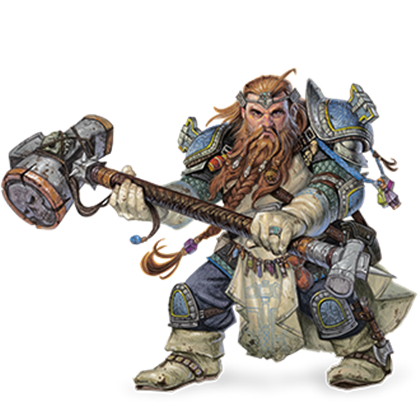
Clerics usually only have access to simple weapons, putting the scimitar out of their reach. However, the War, Tempest and Twilight domains grant bonus proficiencies at level 1, one of which is with martial weapons. The other one is with heavy armor, though, which encourages you not to invest in dexterity as much.
As a big fan of scimitars, it pains me to say that you should probably keep away from them here, even given the option. You’re much better off with a shield and a strength-based, one-handed weapon, like a warhammer, or dropping the shield for a big, two-handed weapon, like a maul.
Suggested Feats
There are a few feats that work very well with scimitars. Here are a few of them:
Slasher

A good feat for any weapon that deals slashing damage, as it allows you to cut 10ft. off the speed of anything you hit until the start of your next turn. Furthermore, a critical hit will now dish out a colossal debuff to anyone that receives it, giving them disadvantage on all their attack rolls on top of the usual crippling of their movement.
Fighting Initiate (Dueling/Two-Weapon Fighting)
Fighting Initiate is a fantastic feat for a whole host of weapons simply because of how many options are available from it. The scimitar can benefit from two of these options, depending on how the character plans on using it.
If you’re only using a single scimitar and no other weapons, Dueling will give you +2 to your damage rolls. However, if you want to use a scimitar in each hand, Two-Weapon Fighting will allow you to add your ability modifier to the damage you deal with your offhand attack.
Duel Wielder
If you’re already picking up Two-Weapon Fighting from Fighting Initiate, give this feat a look. It boosts your duel-wielding potential even further by providing +1 AC whilst holding a separate melee weapon in each hand. You can also draw two one-handed weapons in a single turn instead of just one, so you won’t have to wait two turns to get yourself fully armed.
Whilst this is all great for a double scimitar aficionado, it comes with another aspect that might get you to change your weapon choice: it eliminates the need for the light property, allowing you to duel-wield any of the one-handed weapons in the game. A dexterity-based fighter might find themselves switching to two rapiers instead, as this buffs their damage from the scimitar’s 1d6 slashing to the rapier’s 1d8 piercing.
Defensive Duelist
When you are wielding a finesse weapon you are proficient with, you can use your reaction to add your proficiency bonus to your AC when a creature hits you with an attack. This can turn a devastating hit into a complete miss, which is excellent for those with a hit point deficiency. Remember that this costs you your reaction, so it might be worth avoiding this feat if you already have other reaction options available.
To qualify for this feat, you need to have a dexterity score of 13 or higher, but that probably won’t be much of a problem if you’re already using finesse weapons.
Revenant Blade (Elf Only)

This feat is entirely based on the double-bladed scimitar; it won’t help you at all with the standard version. It’s also only available for pure-blooded elves: even half-elves are locked out of taking this feat. It gives the double-bladed scimitar the finesse property whilst you wield it and grants you +1 AC as well.
Sharp-eyed readers will notice that this seems remarkably similar to the Dual Wielder feat, only arguably worse. Whilst I’m inclined to agree, this feat comes with a free ability point to your strength or dexterity to sweeten the deal a little. The Dual Wielder feat will also do nothing for a double-bladed scimitar user, so if you’re picking this weapon up and happen to be an elf, make sure to get this feat instead.
Famous Scimitars
Not all scimitars are born equal. Some are bought from your local blacksmith for a haggled price, whilst others are venerated as shining examples of swordsmithing. Here are some particularly excellent examples:
Ashram
Forged from bronze by followers of Anhur, this +2 scimitar has a gemstone embedded in its hilt that glows with an eternal flame. Though you would be forgiven for thinking that a fire elemental resides within this gemstone, it’s actually a mysteriously unknown spirit.
The spirit’s powers prevent the sword from taking damage, even against blows that would ultimately destroy a similar blade of its build, and deals extra fire damage to anything the blade hits. Ashram also protected its wielder, granting them fire, thunder, and lightning immunity.
Twinkle & Icingdeath
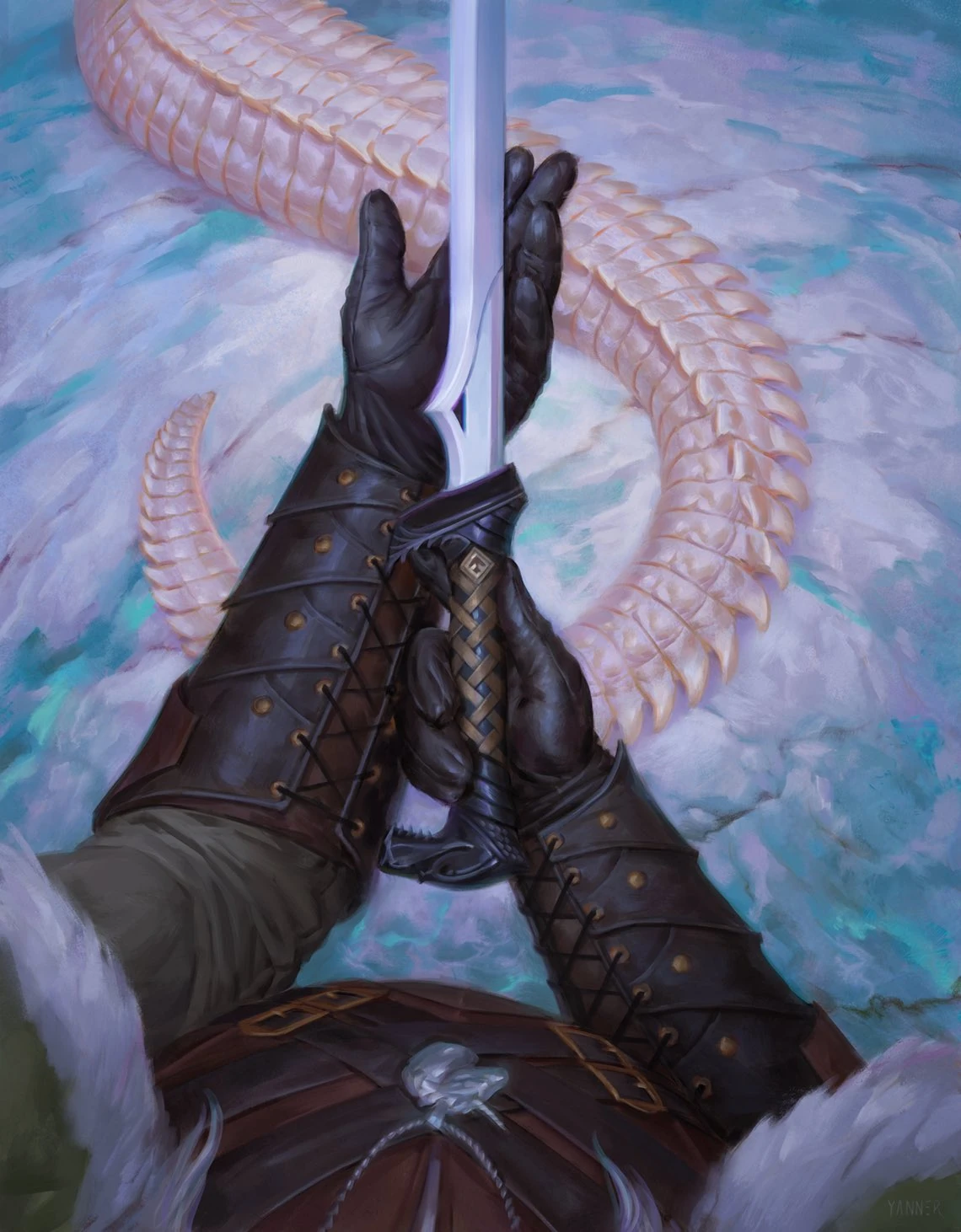
No talk on notable scimitars would be complete without mentioning the most famous dual-wielding drow in all of D&D: Drizzt Daermon N’a’shezbaernon, better known as Drizzt Do’Urden.
Drizzt utilised two powerful scimitars:
The one in his left hand was called Twinkle, which had a sapphire star on its hilt that glowed a soft blue whenever danger was nearby. It was empathic and could communicate with its wielder by imparting emotions to them. Drizzt primarily used Twinkle as his defensive scimitar, deflecting incoming blows and opening up his opponents for follow-up attacks.
The one in his right hand was his primary offensive scimitar, Icingdeath. This scimitar was made of black adamantite and had a cat’s head carved into its handle. Its blade was silver and had a diamond edge.
Icingdeath was a frostbrand weapon crafted to combat flame elementals and other fire creatures. In keeping with its design, it can absorb flame, protect its wielder from fire damage and dish out cold damage, making it perfect against any creature that relies on heat to survive.
The Silver Scimitar Of Amahl the Mad
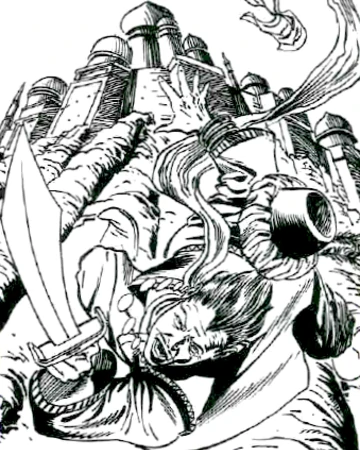
Amahl Shoon IV, Qysar of the Shoon Imperium, was the owner of this silver-plated scimitar: a sword of dancing that could be remotely controlled by ‘Amahl’s Mastering‘. When used in conjunction, these two artefacts allow the scimitar to move around of its own accord, flying through the air, slashing opponents while its owner relaxes at a comfortable distance. Amahl was, by all accounts, a subpar swordsman, so this combat style suited him more than any other, possibly even more so after his descent into insanity.
The Hornblades Of Mielikki

Whilst Silvanus preferred a colossal hammer, his daughter, Mielikki, took more of a liking to twin scimitars. The favourite weapon of The Supreme Ranger was Hartsong, her longbow, but the Hornblades became her top choice for melee combat.
At first glance, the Hornblades look like parts of a broken animal horn. However, with the click of a concealed button, curved blades shot out of the top of them and locked into place, transforming them into powerful +5 scimitars.
Mielikkian clerics and druids often favoured scimitars to reflect and venerate Mielikki’s Hornblades. Rangers and fighters following the teachings of Mielikki would sometimes find themselves with the Hornblades in their possession, as The Forest Queen often granted them to those that fought on her behalf.
Similar Weapons
Shortsword

Shortswords are about as close as you can get to a scimitar without actually picking a scimitar. They deal piercing damage instead of slashing, are slightly lighter (2lb.) and slightly cheaper (10gp), but other than that, they’re identical. Rogues are proficient with shortswords but aren’t with scimitars, so this is a good choice for them.
Rapier

As with shortswords, rogues are also proficient with rapiers, and it’s a common weapon to see in their hands. The rapier is an excellent alternative to the scimitar, boasting more damage (1d8 piercing) whilst keeping the finesse property. It lacks the light property, so dual-wielding will require picking up the Dual Wielder feat.
Handaxe
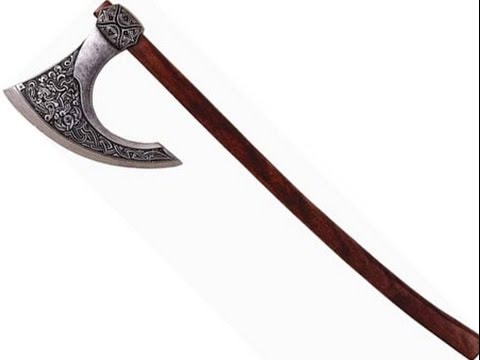
The humble handaxe is often overlooked but can be a great alternative to the scimitar for any build that doesn’t rely on dexterity. It deals the same damage (1d6 slashing), is a simple weapon and has the light and thrown properties.
The only thing it lacks is the finesse property: it’s exclusively a strength-based weapon.
Dagger

The dagger deals very little damage: only 1d4 piercing. However, it’s a simple weapon, so you can use it without requiring martial proficiency.
Furthermore, it has the light, finesse and thrown properties, making it a convenient weapon overall. Once more, it’s a weapon favoured by rogues, who can compensate for its low damage with their sneak attacks.
FAQs
Question: Is a scimitar a simple weapon?
ANSWER: No. A scimitar is classed as a martial weapon to reflect the specialised training required to utilise it effectively.
QUESTION: DOES A SCIMITAR USE STRENGTH OR DEXTERITY?
Answer: Whichever you want to use! Thanks to its finesse property, you can roll both attack and damage with either your strength or dexterity modifier. The only stipulation to remember is using the same modifier for both rolls.
QUESTION: WHY CAN DRUIDS USE SCIMITARS?
ANSWER: This is an interesting question with quite a bit of history.
Way back in the first iterations of d&d, druids weren’t a class of their own. Instead, they were considered a cleric subclass. The design of old-school d&d meant that clerics couldn’t easily use slashing weapons. The scimitar was given to druids to differentiate them from the average cleric. Thanks to ancient ireland and celtic mythology, sickles are generally considered the quintessential druid weapon. The decision was made to continue this theme, allowing the druid to use “Crescent-shaped swords” as well.
Later on, this definition was refined to just “Scimitars”, and druids have kept the proficiency ever since.
Conclusion
If I haven’t made myself clear already, I absolutely adore scimitars. I think they’re amazing, and I try to use (at least) one whenever possible.
This might come as a surprise to any shortsword advocate. The scimitar, after all, costs 15gp more than the Shortsword, has precisely the same properties, is a martial weapon rather than a simple one, and only weighs a measly 1lb more. The mechanical advantages of scimitars over shortswords are arguably non-existent. What’s more, if you don’t have duel-wielding as a priority, rapiers are better than either. On paper, it seems like the scimitar isn’t worth the investment.
However, here’s a counterpoint: are they nearly as cool?
Scimitars have an appeal that’s hard to explain without a good theatre of the mind session of D&D. Describing how a scimitar looks, acts and feels in combat is much more fun than describing the same of rapiers or shortswords. No mechanic in the game can take away how stylish scimitars are, and that’s more than enough for me! Anyone can stab, but becoming a whirling vortex of blades is exciting, not just for you but everyone else around your table.
- Best DnD Character Builders Online - November 20, 2022
- The Best DnD 5e Character Builder Sheets - October 9, 2022
- Scimitar 5e Guide: Curved Swords - September 27, 2022

